In this article, you will learn what different types of Natural Lights are available and how to use them to create stunning images of Wildlife and Nature.
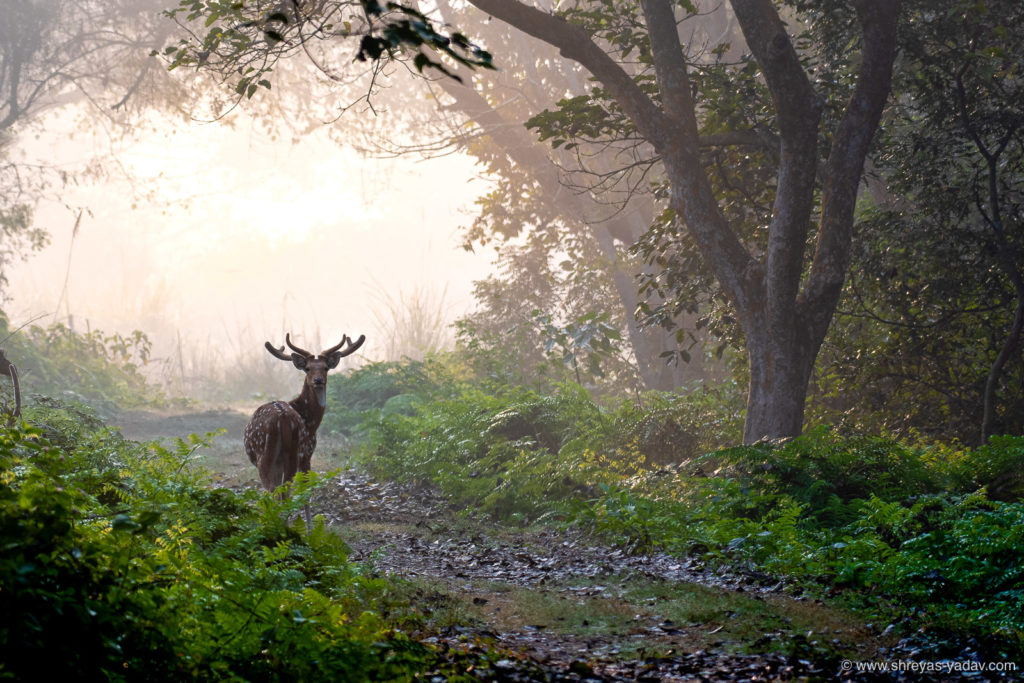
Why my wildlife images look boring and dull. I don’t find the WOW factor in my pictures.
My images are sharp, and exposure is ok, but I don’t find them interesting, what’s the reason?
Does this sound familiar to you? Do you have these types of questions?
Well, it’s time to look for the most essential element in your images – Light!
With appropriate Light you can make your images awesome.
Finding the right Light is an art. Once you learn what type of natural Light is available, and how to use it, the quality of your images will skyrocket.
In this article, you will learn what different types of Natural Light are available and how to use them to create stunning images of Wildlife and Nature.
And the best part is you can use the techniques discussed in this article with any type of camera.
Let’s dive right in –
Here are the five types of natural Light in Wildlife photography
1. Front light
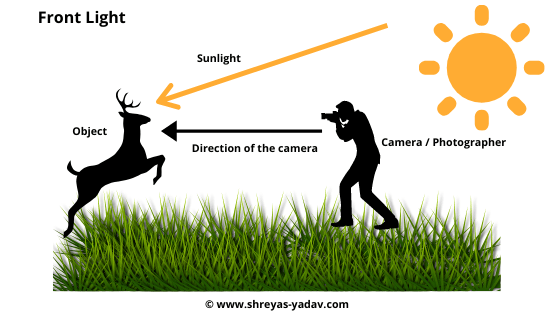
When the sun is at your back, and the object is in front of you, that time, you can see a front light on the subject.
Sunlight is directly falling on the object in front of you. This type of Light is suitable to reveal the details of the Wildlife. Front light also helps to capture the physical features of the object.
Eyes, hairs, wing, and face will be sharp and well lit in case of front Light.
The front Light is observed during the summer and wintertime. Generally, you can get a best front light from 7:30 am till 10:00 am and in the evening from 4:00 pm to 5:00 pm ( It is a guideline- These times will vary a bit based on which part of the world you stay in )
The Light between 10:30 am to 3:00 pm is harsh and best to be avoided. The main reason is – Harsh Light creates extreme shadows and highlights. Also, During this time of the day, there is less movement of the Wildlife.
Below is the image photographed in Front light
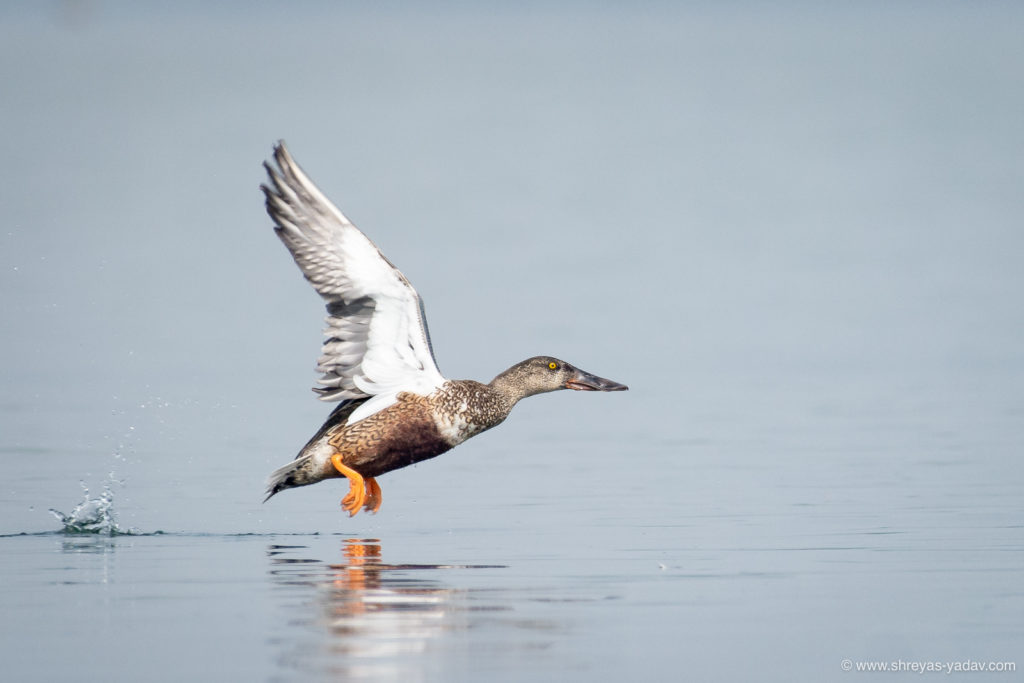
2. Side Light

Sidelight is created when the object is lighted from the left or right side.
Side lighting creates interesting shadows and highlights. Expressions, features, and colors of the object look uneven yet beautiful.
Sidelight is observed mainly during the start of the winter season. Side-light is also prominent during the end of summer and the beginning of monsoon ( Rainy season ).
The best time to find a sidelight is early morning and late afternoon. ( In the morning from 6:30 am to 8:00 am and in the evening from 5:00 pm to 6:00 pm is the best time to get side light)
Here is an image photographed in the sidelight.
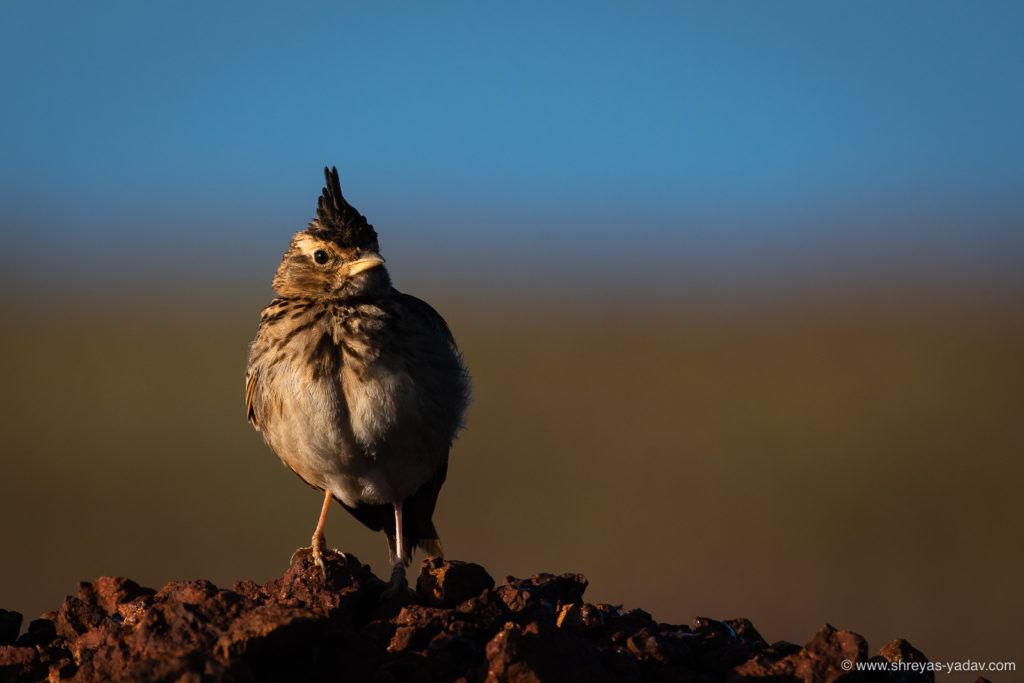
3. BackLight
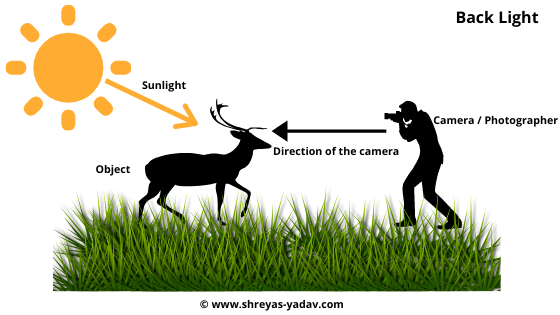
When the object is between you and the sun, then backlight is created. For capturing the backlight effect, sunlight should come from the back of the Wildlife. And you ( Photographer ) should be in front of the Wildlife.
The backlight is prominent during the edge of the day. Early mornings or late evenings are perfect for creating a backlight image.
Season wise most of the seasons are ok for a backlight image. Irrespective of the season, time of the day is essential for creating the backlight.
Here is an image with BackLight. The main object was in front of me, whereas the sunlight is at the back of the Wildlife.
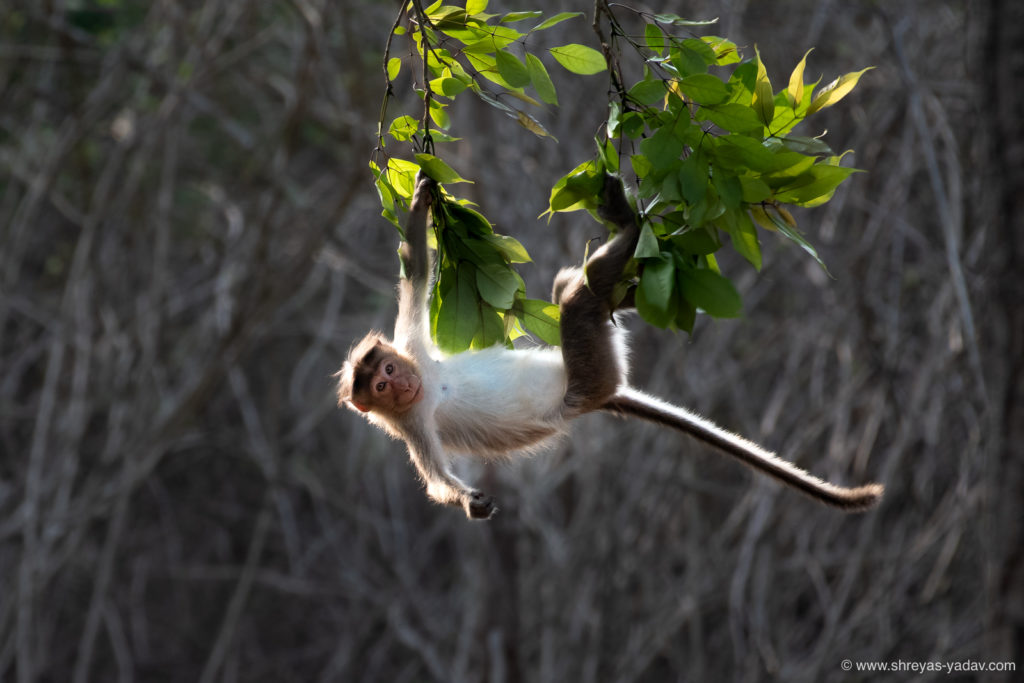
4. Diffused Sunlight
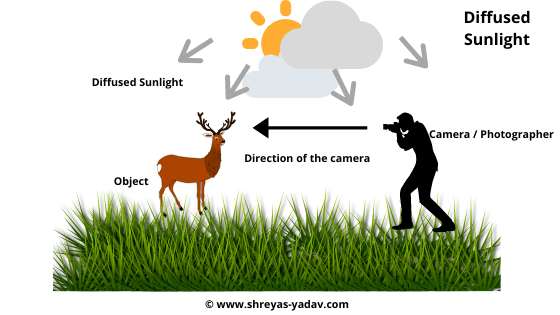
Similar to the light diffuser in a photo studio, clouds are the natural light diffusers.
Cloudy skies are the best to find diffused sunlight. Typically monsoon ( Rainy ) season is best to get diffused sunlight.
Diffused sunlight creates even Light. No shadows or highlights will be visible.
Diffused Sunlight is excellent for creating well-balanced exposure. Colors, contrast, and sharpness are excellent in even Light.
Diffused sunlight is observed during cloudy days or during the rainy season.
Late morning and early evening time is great to create beautiful images in the diffused sunlight. During the cloudy days, you can find the diffused sunlight during this time.
Here is an example of the image created in diffused sunlight. You can see There are no shadow or highlights. Overall exposure is well balanced.
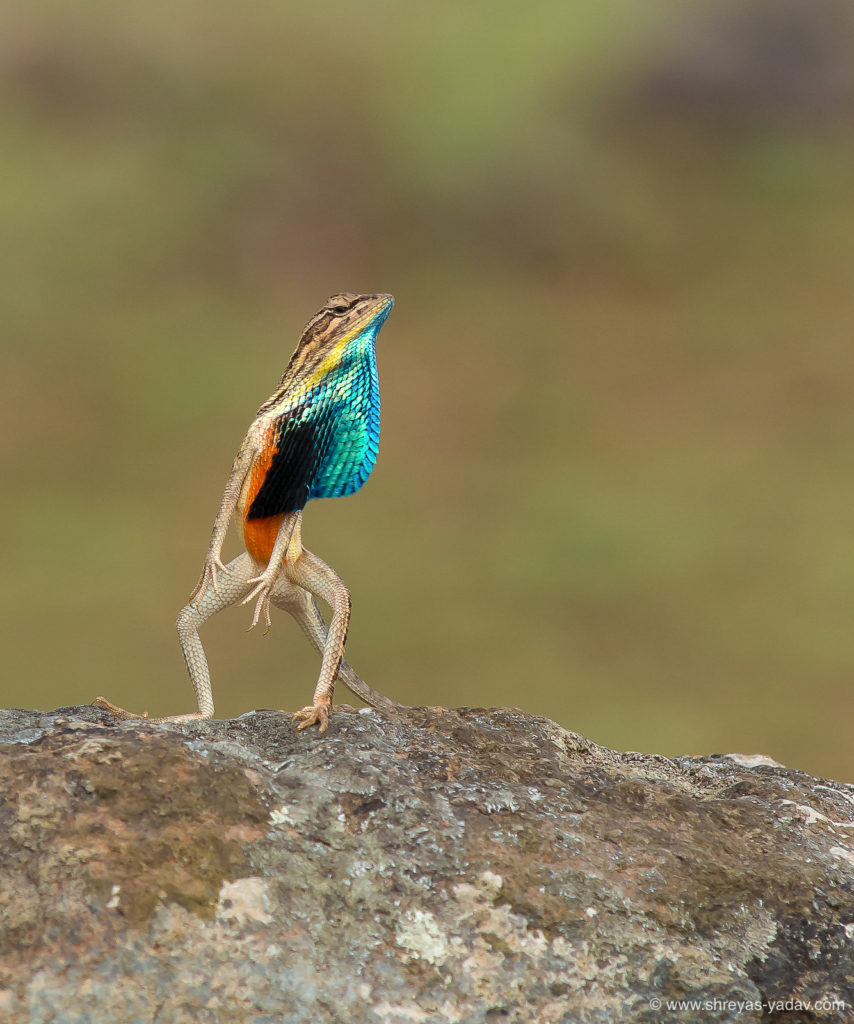
5. Magic Light
As the name suggests, this is magic Light. It is also called god’s Light.
Magic light is prominent during morning and evening time. It is also observed during the Rainy season ( Monsoon). Also, When there is a change in season such as summer to monsoon and monsoon to winter – you can observe the magic Light.
I have seen beautiful magic light during August. During this time, there is a transition between monsoon and winter season.
Generally, there is an excellent play of sunshine, clouds, and rain. Unlike the four lighting conditions mentioned in this article, there is no standard way to find Magic light
It just happens during the right season. Each magic light formation is unique and beautiful. As soon as you see the magic light, get ready to capture stunning images of Nature and Wildlife.
Here is the image I have captured during the magical light settings.
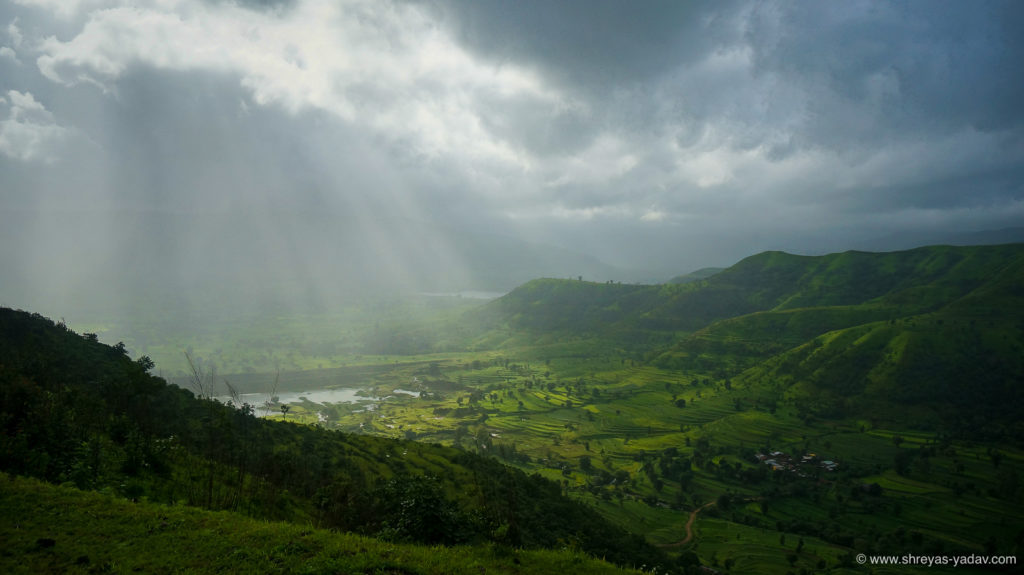
We can not control the Natural Light. But we can find desired Light by selecting the correct season and time of the day to shoot.
Excellent Light will help you to create some of the iconic images.
Learn to plan your photography trips ( Session ) as per the season and time of the day.
I love diffused sunlight and magic Light. My recommendation is to you be ready with your camera during cloudy days and when there is the season change.
Now I would like to hear from you.
Now it’s your turn –
Which type of Light do you love? I would like to hear that in the comments below –
EXPLORE. PHOTOGRAPH. INSPIRE
JOIN OUR NEWSLETTER AND GET THE BEST ARTICLES ABOUT DIGITAL POST-PROCESSING AND PHOTOGRAPHY TECHNIQUES. NO CHARGE. NO SPAM. ONLY LOVE.
This is a jammed pack informative article. Appreciate your time and effort to write this.
Hello Sarajit Sil,
Thank you. Good to know it is helpful to you.
Hi Shreyas, this is good article and gives idea about use of lights. I am still a beginner but I like magical light.
Good to know you find it helpful, Yes Magical light gives unique light conditions for photography.
your articals are always informative.
thx for sharing.
hema alase
Thank you. I am glad to know you find this article helpful.